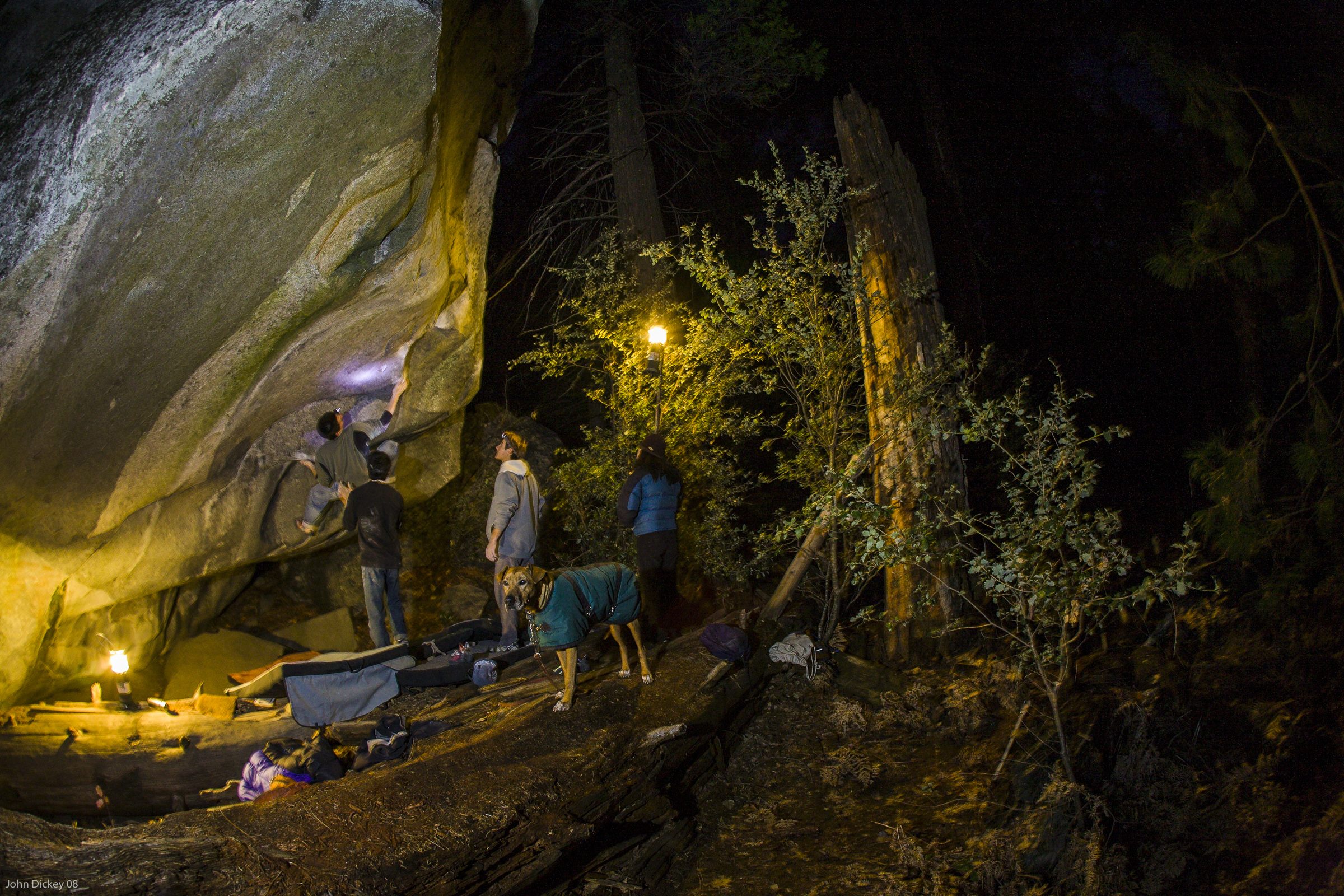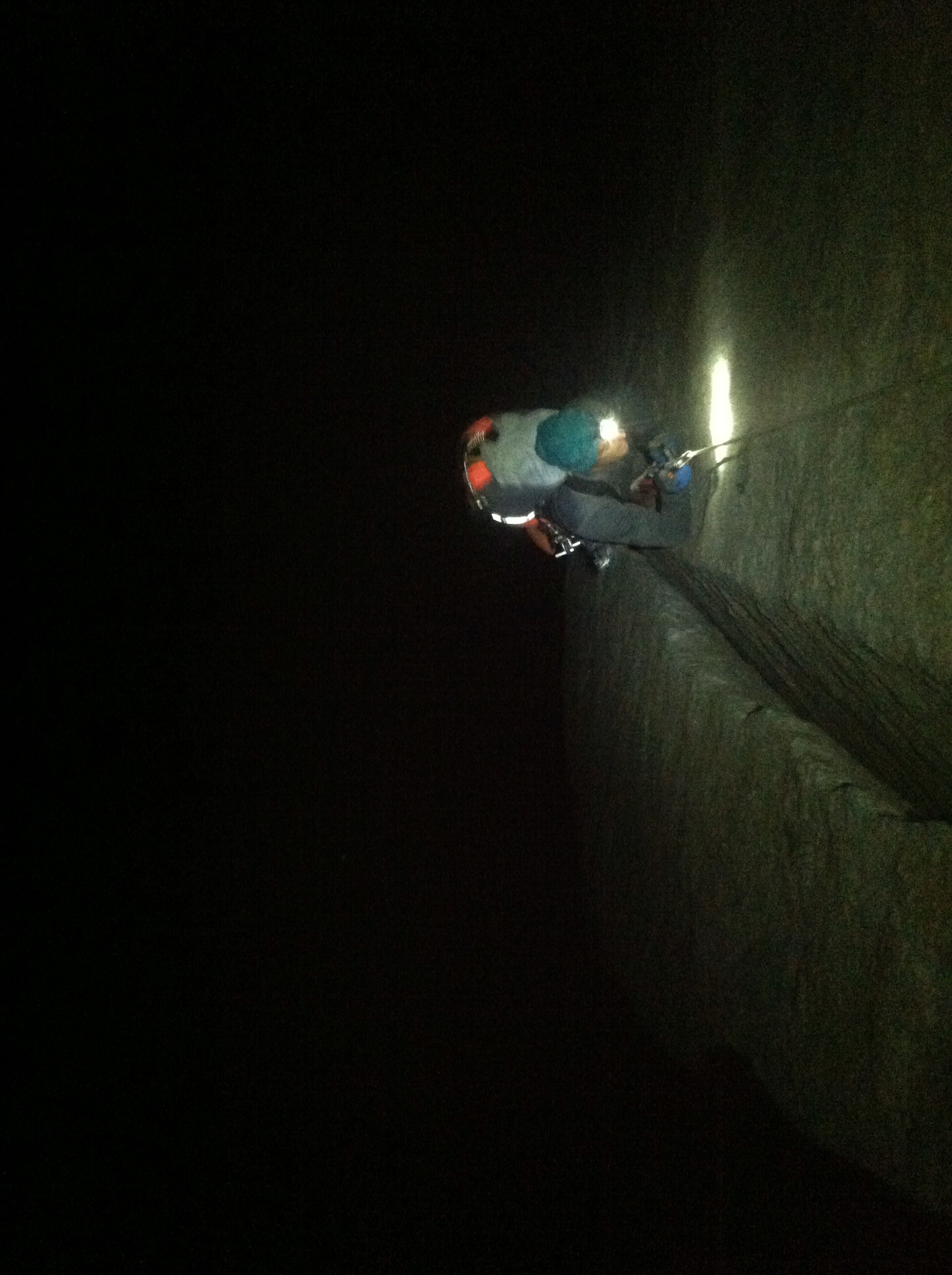The time change and the fall season means short days. In Yosemite, darkness falls in the Valley at 5:30. If you are driving out from the bay or sleep in at all, that translates to very little time to climb. The best way to make the most of your trip is to climb at night. If you’re into alpine starts to climb El Capitan, you will probably need to do a fair bit of night climbing. Not only will a night session extend your climbing time but it will kill the long boring hours before bed, it allows for better temps and more time to get up the wall.

John Dickey photo of Paul Barraza on Yabo Roof
Get A Good Headlamp:
There’s a variety of options for headlamps out there. Use the brightest one possible. Grab some fresh batteries. Better is to use a rechargable headlamp. Bay Area climber Dan Freschl produced the escellent Bosavi headlamp, which recharges with a USB cable. Also check out the Black Diamond Sprinter headlamp.
Look at Your Feet:
Be extra precise with your footwork when climbing at night. Shine the headlamp in small circles to double check on shadows. Move carefully. The temps tend to be significantly better and your feet will stick way better at night if you take time to place them well.
Bring a Lantern:
While you can’t exactly swing a Coleman lantern half way up El Capitan, you can bring a lantern to the boulders. Get a propane lantern. They tend to be brighter than the battery operated variety. Some companies sell sticks to hang lanterns or find a tree. Make sure you hang the lantern in the spot that casts the least shadows on the wall.

John Dickey jumaring the Stoveleg pitches at 3am
Know Where You’re Going:
Earlier this fall, I climbed to Dolt Tower on the Nose with photographer John Dickey for a sunrise photo shoot. I got lost looking for a pendulum point because I failed to see the bolt in the dark. I checked the topo a few times and found the spot where I needed to swing to the Stoveleg Cracks. If you’re out bouldering, know where the problem is, how to get off and what the holds are. Knowing where you’re going helps significantly. It’s easy to get lost in the dark.
Stay Warm:
The colder conditions may make climbing easier but it also gets a lot cooler when you’re inactive. Grab a thermos of hot tea for bouldering and a belay jacket for longer routes.
Staying warm with plenty of light, knowing where you’re going and climbing well will add to a succesful night of climbing. If you want practice, the gyms periodically have night climbing sessions. Stay tuned for the next event, bring your headlamp and have fun.

